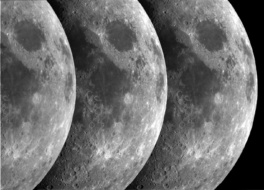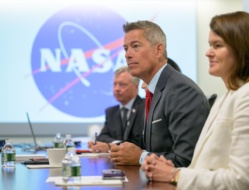NASA has ordered a tenth private Moon landing, awarding Intuitive Machines $116.9M to deliver six scientific payloads to the lunar South Pole. The Commercial Lunar Payload Services (CLPS) mission will be Intuitive’s fourth trip to the Moon.
- In February, the company’s first mission landed safely, if not entirely softly, on the Moon, where it communicated with ground controllers for several days.
- IM-2 is expected to launch this year, with plans to land on the Shackleton Connecting Ridge at the Moon’s South Pole.
- In 2025, IM-3 will visit Reiner-Gamma, an unusual geographic feature near the Moon’s equator that boasts unusually strong magnetic fields.
- IM-4, the mission just awarded, is expected to launch to the lunar south pole in 2027, where its payloads will help hunt for volatile chemicals there, including a drill to sample the regolith and a variety of remote sensors.
Make it boring: IM-4 is similar to IM-2 in terms of destination and payloads, which means the company isn’t planning major changes to its Nova-C lander. That’s a positive sign for the push to make lunar access sustainable and routine.
“Can you imagine saying, this is going to be a straightforward lunar deployment?” IM CTO Tim Crain said. “That’s a success in itself: We’re starting to do some repeat capabilities at the Moon, everything is not a one-off, boutique solution.”
This award is the largest dollar-amount task order Intuitive has won, and NASA has purchased most of the payload space on the vehicle, but there is some room for commercial customers; there will also be opportunities for a deep space rideshare.
Viper Opportunity: Crain also told Payload that Intuitive will submit its response soon to NASA’s request for an organization to pick up work on the Volatiles Investigating Polar Exploration Rover (VIPER).
Crain said that VIPER would only take up about 1/3 of the payload space on the company’s expanded next-generation Nova-D lander, allowing the company to deliver other commercial and international payloads to support the cost of the mission.
Crain expects Nova-D to be ready for primetime in the 2027-2028 timeframe.
Share copy




